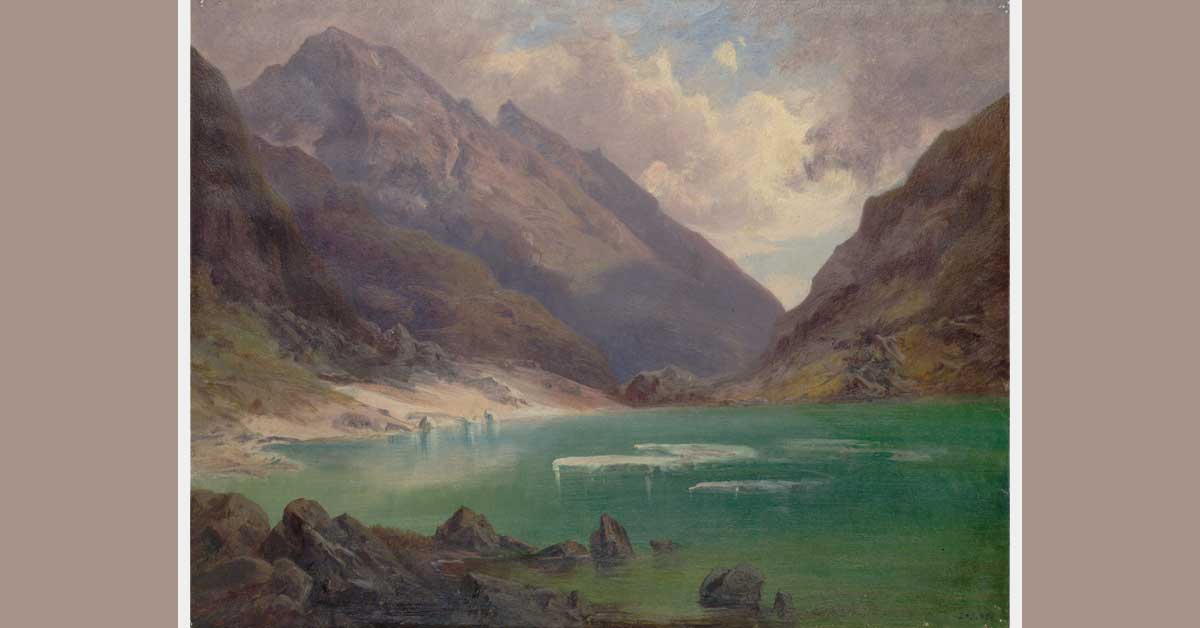

29 June 2025  Just in Time for the HolidaysAs the school holidays begin in Vienna, many families are setting off for relaxed vacations or taking the opportunity to discover new countries. The Albertina Museum has timed its new exhibition Travels. Artists on the Move perfectly, offering a cultural counterpoint to summer wanderings. Running from June 27 to August 24, 2025, the exhibition features works by renowned artists such as Johann Wolfgang von Goethe, Caspar David Friedrich, and Tina Blau—illustrating how travel has shaped artistic vision over centuries.A Brief History of Travel and Tourism in AustriaWhile the impulse to roam far from home can be traced to ancient times, tourism as a widespread cultural practice is a relatively recent development. In Austria, travel was long a privilege reserved for the nobility and the wealthy elite. From the Renaissance through the Enlightenment, the so-called Grand Tour was a rite of passage for aristocratic men—often lasting years and including extended stays in classical cities like Rome, Florence, and Naples.It was only in the 19th century, with the rise of the bourgeoisie and the advent of railways, that travel became accessible to a broader population. In Austria, industrialization brought not only technical infrastructure but also a new leisure culture. The first rail connection in the Austrian Empire was established in the 1830s, and by the late 19th century, train travel, alpine clubs, and tourism infrastructure were booming. Travel was no longer just an aristocratic diversion but a common social experience—one that inspired artists as much as it offered them mobility. Travel as Artistic Practice: Themes from the ExhibitionThe Albertina exhibition explores how artists internalized their journeys and translated them into visual languages that still shape our understanding of foreign landscapes today. Divided into thematic sections, the show begins with the Grand Tour, highlighting the long journeys taken by European elites, often accompanied by artists tasked with capturing the splendor of classical architecture and Mediterranean light.Another chapter, On the Move, traces how industrial progress and artistic tools—such as portable paint boxes and travel easels—changed the very nature of artistic travel. No longer reliant solely on noble commissions, artists began to venture out independently, creating personal and often poetic accounts of the places they visited. Central figures such as Goethe are presented not only through their literary achievements but also as visual storytellers. His Italian Journey (1786–1788), famously documented in both prose and drawing, is a testament to a kind of travel that was intellectual, artistic, and deeply personal. Traveling incognito, Goethe explored cities like Venice, Rome, and Naples, eventually reaching Sicily, accompanied by a sketch artist. His visual impressions reveal a desire to see and record beyond the superficial—seeking atmosphere, light, and meaning in landscapes. These culture producers—artists, poets, writers—played a vital role in shaping collective consciousness. They were not merely chroniclers of places but interpreters of mood, light, and meaning. Through paintings, poetry, and prose, they transformed individual impressions into shared visual and literary vocabularies. Culture producers, in this sense, are those who give form to the intangible—who translate atmosphere, memory, and imagination into works that resonate across generations. Historically, these roles were dominated by men, whose travels were often funded and legitimized by noble patrons or institutions. A Room of Their Own: Women and Landscape PaintingIn a decisive curatorial move, the Albertina dedicates a full section to female artists, whose participation in artistic travel was historically limited by societal constraints. Until 1920, women in Austria were barred from attending formal art academies. Without access to education, commissions, or patronage, they had to rely on private tuition and familial support.Despite these barriers, several women managed to assert themselves as landscape painters. Tina Blau and Olga Wisinger-Florian were recognized in their lifetimes and allowed to exhibit, though often marginalized within those very exhibitions. Others, like Emilie Mediz-Pelikan and Marie Lippert-Hoerner, remain lesser-known to this day. A particularly striking inclusion is a work by Anna Baar-Plommer, titled Mountain lake with Glockner group (1860–1890). Little biographical information exists on Baar-Plommer—an indication of the historical neglect many women artists suffered. Born in Grinzing (now part of Vienna) in 1836, Baar-Plommer trained with landscape painter Anton Hansch and became known for her evocative oil paintings and watercolors of the Austrian Alps. She exhibited at major art associations in Vienna, Salzburg, and Bremen. Baar-Plommer's works were especially popular among the Viennese aristocracy. Among this social circle, she also taught painting. From her preserved painting, however, one senses a refined sensitivity to place, mood, and atmosphere. Her work encapsulates what this exhibition celebrates: a personal vision shaped by the act of traveling and observing. From Viewing to Seeing: An Invitation to Travel DifferentlyTravels. Artists on the Move is more than a journey through art history. It invites viewers to reconsider how we travel and what we take in along the way. In an age of instant images and crowded destinations, the exhibition offers a slower, more deliberate model of seeing—through the eyes of artists who sought not only to capture topography but to translate its feeling and form.For those setting off on their own summer adventures, the Albertina provides timely inspiration. Whether standing before an alpine lake or a Mediterranean ruin, it's worth asking: what am I truly seeing? Can the view be more than a snapshot—something to contemplate, absorb, and perhaps even translate into our own forms of creative memory? Image: Anna Baar-Plommer, 'Mountain lake with Glockner group' (1860–1890), Oil on paper, 31.7 × 41.1 cm, The Albertina Museum, Vienna. A tranquil mountain lake scene with the peaks of the Glockner group in the background, captured in naturalistic tones. Photo: © The Albertina Museum, Vienna |